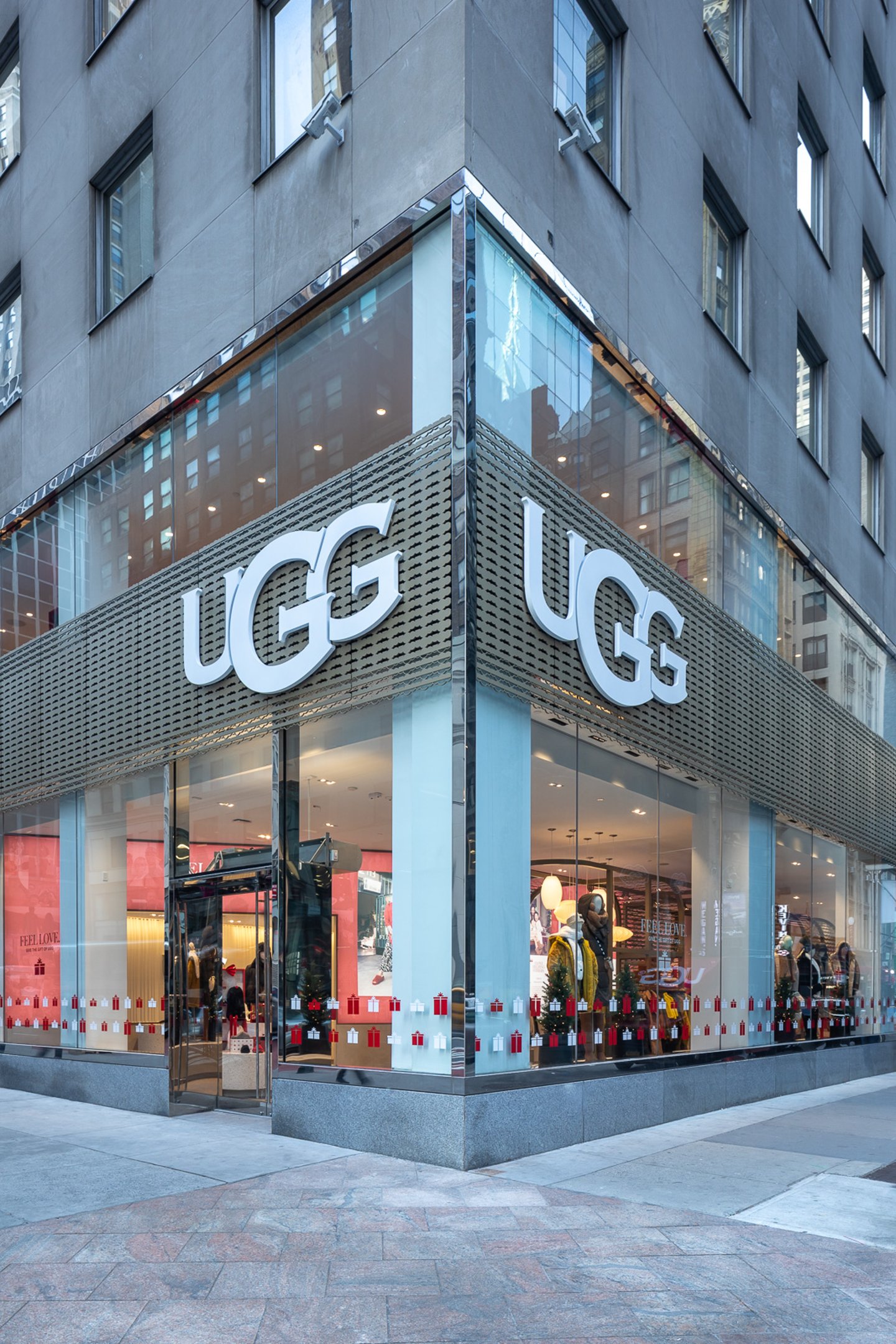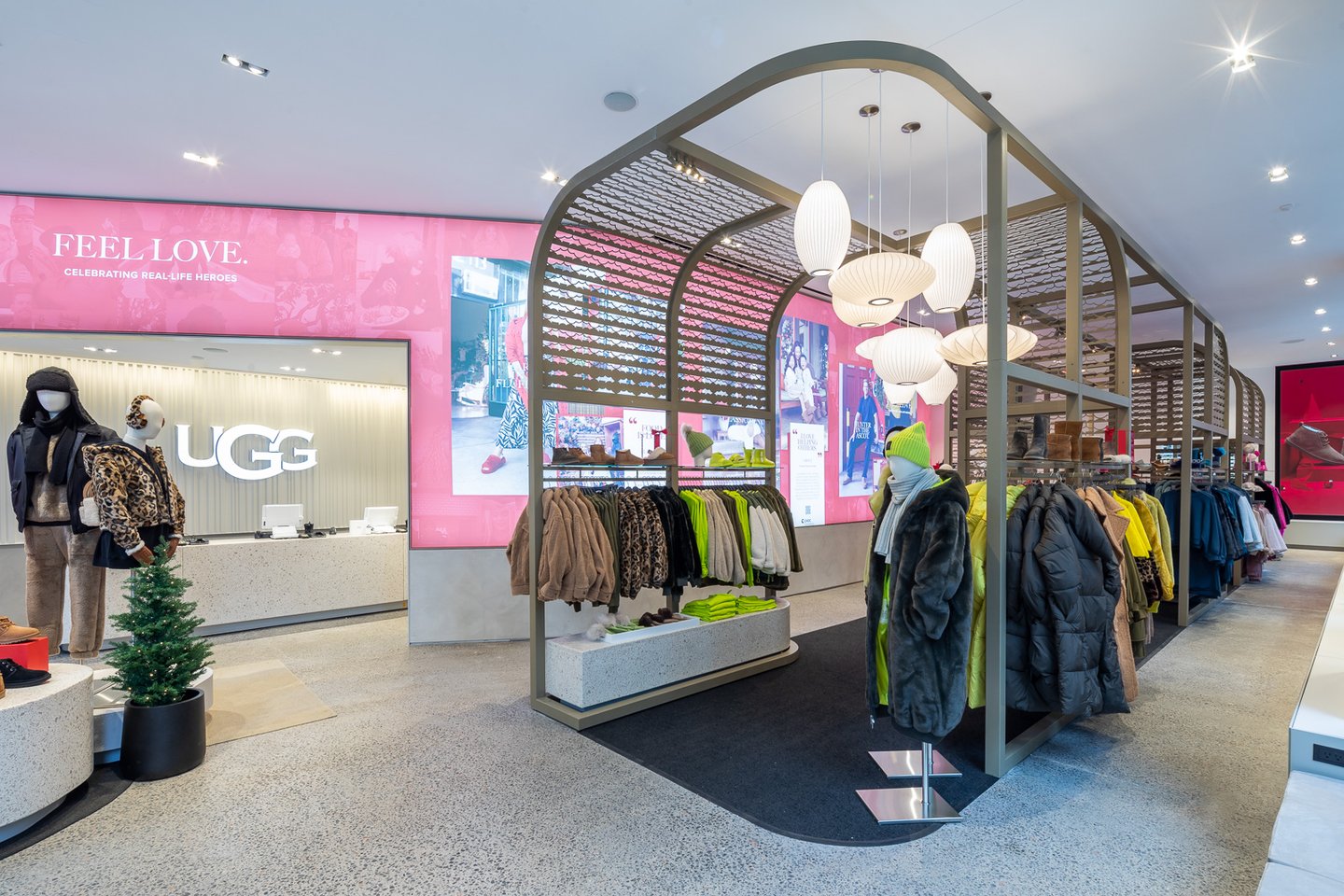How Deckers Brands Overhauled Its Tech to Omni-Serve Customers
Deckers Brands’ mission is to “get it right for customers, every contact, every time.”
This is no small task. The global company has retail locations and offices around the world, including over 140 UGG stores, which are comprised of concept, outlet, pop-up, store-in-a-store, and flagship stores. Deckers also runs global e-commerce sites and, in addition to UGG, its brands include HOKA ONE ONE, Koolaburra, Teva, and Sanuk.
Located in Broomfield, CO, Deckers’ customer care director Bryan Riter’s team manages customer contacts for all five of brands in the Deckers portfolio across all of North America. Riter oversees the strategy, planning and execution of Deckers’ overall customer experience vision and goals. He works cross-functionally with the e-com, distribution, planning, marketing, retail, and technology teams to provide insights, remove customer pain points, and ensure the retailer is providing its customers a seamless buying experience across touchpoints.
Deckers was experiencing the pain of ticket-based customer service platforms and needed to move to service all customers across all channels. In addition, the company had to pivot to a world where their agents are working from home.
Below, CGT sister brand RIS talks with Riter to uncover how Deckers is harnessing technology to help it keep its focus on the customer, improve customer satisfaction, and truly provide a first call resolution.
Q&A WITH Bryan Riter, Customer Care Director, Deckers
Can you tell us about your ticket-based customer service platforms and what were the drivers to change?
Bryan Riter: Our mission is to get it right for customers, every contact, every time. With this goal in mind, I knew we needed to transition away from a traditional ticketing models and our current customer relationship management (CRM).
One of the main things that attracted us to [customer service platform ] Gladly, was the emphasis of putting the customer at the middle of everything they do. Moving away from a fragmented experience, we found a ton of success in truly leveraging our talent and being able to drive a more personalized customer experience. Prior to Gladly, our teams were in a silo and only certain team members could take chats and emails, and others could only take calls. Primarily due to restrictions on licensing, we found ourselves not being able to leverage our workforce and adapt to demand.
Our team members can now interact with customers across multiple channels and essentially meet the customer where they’re at. I believe the future of customer service is understanding and adapting to customer’s needs, schedules, and preference for how they want to contact us.
How long did the CRM project take from planning to launch?
Riter: Implementing a new CRM can certainly be a daunting task, or at least I thought so. Moving swiftly through project planning, scoping, and integration we found ourselves meeting a six-week timeline goal and being able to successfully launch this new partnership right in time for our new fiscal year. Gladly took most of the implementation burden off our team by being extremely well planned, efficient, and demonstrated why we partnered with them.
In under a year, we’ve been able to meet several milestones such as: introducing SMS, integrating into our order management system, reducing contacts as percent of orders, and piloting our UGG flagship store. Through technology, data, and some key features, we’ve been able to improve service levels and create a dramatically different customer experience.
How have business processes changed and what are some of the challenges you encountered during this change initiative?
Riter: In addition to implementing the new CRM, we also teamed up with Gladly to identify some key partners in workforce management and quality assurance software. Quickly following implementation, we partnered with Stella Connect for customer satisfaction surveys, quality assurance, and coaching, which has empowered our team to drive an exceptional customer experience. We also integrated Gladly with Teleopti, which has been incredibly valuable this year as there were so many unknowns around volume, staffing, and consumer behaviors specific to e-commerce.
I appreciate the inclusiveness of the CRM and how efficient it is to find trends, provide feedback to our brands, and see everything that is going on real time. It’s completely changed the way we interact with our customers and team members. This year alone, we’ve implemented over 30 key fixes designed to create a better customer experience, grown SMS from 3% to 29% of our overall volume, and created record-setting customer satisfaction levels.
What are the benefits and how has this new tech impacted CSAT and ratio of contacts to orders?
Riter: With e-commerce taking on so much additional volume this year I knew we had to move quickly and ensure we didn’t miss a beat when it came to delivering a great experience to our customers. Once we implemented the solution, we had weekly calls with our customer success manager at Gladly, Franklyn Carr, who is not only invested in our success but takes an active role in spotting trends, providing best practices, and ensuring our needs are met.
Gladly allows us to be more agile, adapt to demand, and focus less time on management/reporting and more time on our team members and customers. With so much of this year being unknown and transitioning our entire team to work from home as well as adopting a new CRM in April, I am very excited with our results this year and we’ve haven’t even tapped into all of the functionality yet.
My vision for 2021 is to really start removing some of the more logistical contact reasons, such as shipping, issues with returns or exchanges, and order status, and pivot to a customer service operation that is more proactive, helping with conversion and driving revenue for our brands. Here are some of our trends for 2020:
- Improved customer satisfaction 5%, putting us to a 91% across 97K customer responses for 2020
- Increased first call resolution 4%, putting us at an 87% across 85K customer responses for 2020
- Reduced contacts as % of orders 29% year-to-date
- Grew productivity and concurrency and are now exceeding 2.0
- Drove SMS from 3% to 29%, while also adopting several SMS & IVR enhancements, which is redirecting 15% of our current volume to self-help
- In December we’re seeing improvements our service level by 40% creating minimum wait times for customers across all channels.
How has this helped agents to be even more productive?
Riter: By utilizing more efficient channels like Chat and SMS, we've been able to empower our agents to help more customers. We regularly exceed a concurrency measurement of 2.0 for our digital channels, as opposed to 1.0 for phone and email, helping us be more efficient than ever. Even throughout Cyber Monday and some of our biggest revenue days, we’ve been able to keep wait times under a minute on both voice and chat and are regularly maintaining a strong SMS service level.
Agents can now see conversation history regardless of how the customer reached out, they can send the customer a follow up text with detailed instructions and, following our OMS integration, we now know who’s contacting us. Customers no longer have to repeat themselves, agents can quickly assess issues and provide solutions, and we can truly provide a first call resolution.
What best practices can you offer your peers who are looking for similar solutions?
Riter: Focus on the customer. Put them at the middle of all of your decision making and make it extremely easy for them.
With consumers having more options than ever, I think it’s critical that we work harder so they don’t have to. It starts with identifying the customer journey and understanding pain points. This is where Gladly has been extremely valuable for us. We have so much data around why customers are contacting us, how they’re contacting us, and even what they’re searching for. With this information we we’re able to create several key projects this year that helped us net a 29% reduction in contacts as a % of orders.
The internal knowledge base, chat sidekick, and customer-facing answers have a lot of parallels, making it easy to create the most up-to-date information and articles based on what both consumers and our team members are searching. We been able to increase our customer search success rate to 90% which means customers are finding relevant answers based on current issues. This also means, that 60% of those customers didn’t need to speak with an agent.
With updates being so easy to make and being real time, we’ve been able to pivot our chat and customer service FAQ’s to align with the current state of things, and truly adapt as things come up. Between shipping delays, inventory, and additional volume we’ve been able to consistently predict what a consumer will reach out about and get in front of it to reduce overall contact volume.






